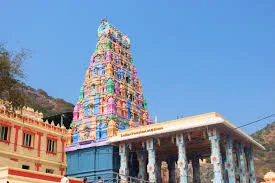
Guntur was ruled by famous dynasties such as the Satavahanas, Andhra Ikshvakus, Pallavas, Ananda Gotrikas, Vishnukundina, Kota Vamsa, Chalukyas, Cholas, Kakatiyas, Vijayanagara and QutbShahis during ancient and medieval times. The famous Battle of Palnadu which is recorded in legend and literature as PalnatiYuddham was fought in Guntur district in 1180. Guntur became part of the Mughal Empire in 1687 when Emperor Aurangzeb conquered the Qutb Shahi Sultanate of Golconda, of which Guntur was a part at the time. In 1724, Asaf Jah, viceroy of the southern provinces of the empire, proclaimed his independence as the Nizam of Hyderabad. The coastal areas of Hyderabad, known as the Northern Circars, were occupied by the French in 1750. Raja Vasireddy Venkatadri Nayudu (1783-1816) moved his capital from Chintapalli in Krishna district to Amaravati on the other side of the Krishna River. He ruled with generosity and built many temples in the Guntur region. Guntur was brought under the control of the British East India Company in 1788 and became a district of the Madras presidency.
Guntur region played an important role in the struggle for independence and the formation of Andhra Pradesh. The northern, Telugu-speaking districts of Madras state, including Guntur, advocated a separate state after independence, and the new state of Andhra Pradesh was created in 1953 from Madras eleven northern districts. The city was founded by the French in the mid-18th century, but ceded to the British in 1788. It became a municipality in 1866. As a railway junction and trade center, Gunturs economy is dominated by the cultivation of jute, tobacco and rice. Guntur is the site of an agricultural research station. Andhra Christian College (founded 1885) is affiliated with the nearby Achariya Nagarjuna University, while a government college, medical college and several other colleges are affiliated with Andhra University in Vizianagaram. Nearby is a ruin of a 12th century fortress on a hill.

